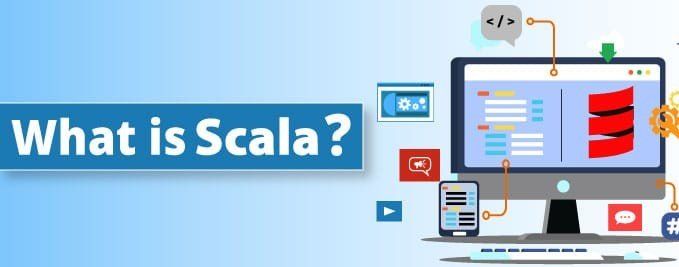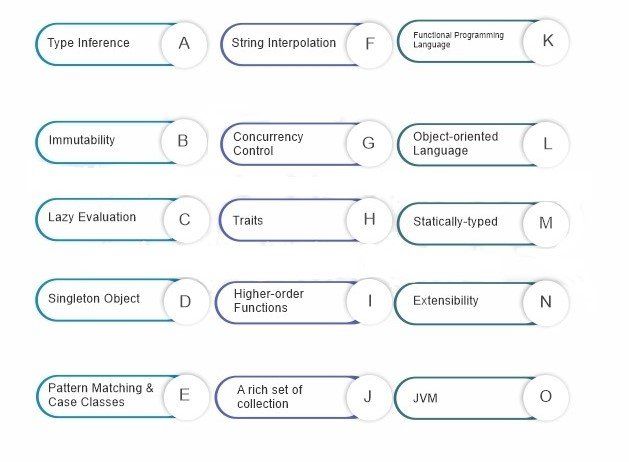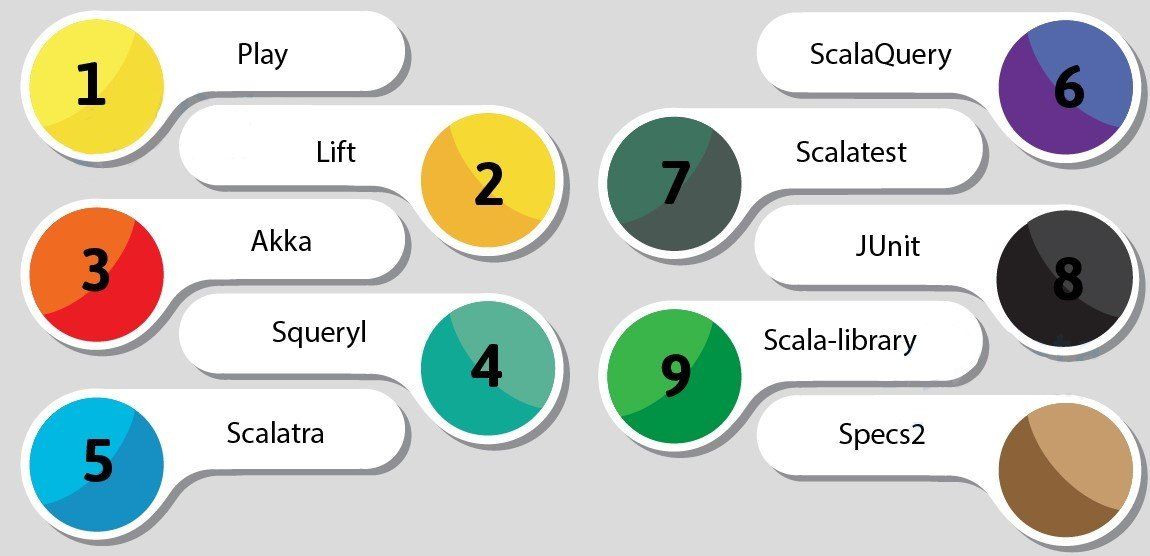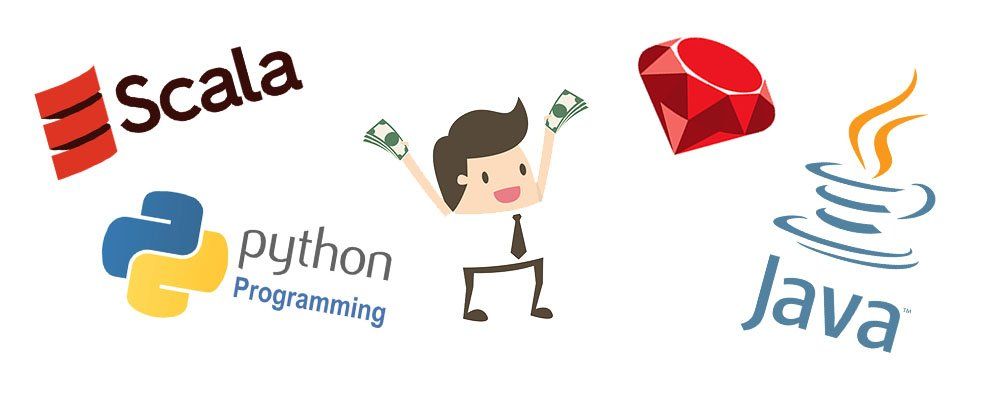Land Your Dream Job
AI-Powered Resume Builder
Create an ATS-friendly resume in minutes. Free forever!
8 min to read
Scala is a general-purpose, object-oriented programming language. It provides support to functional programming. It also helps in avoiding bugs in complex applications. In this article, you get to know about Scala and what is Scala used for.

Scala is a programming language invented in the year 2003 by Mr. Martin Odersky and his team. Scala was released publicly in 2004 on the Java platform. The name Scala is a blend of scalable languages. That signifies it is designed to grow with the demands of its users.

Scala runs on the Java Platform(JVM). So it is compatible with all the existing Java programs. Even its compatibility with JAVA makes it well-suited to Android development. Because Android applications typically write in Java and translate from Java bytecode into Dalvik bytecode when packaged.
Let’s talk about some Scala compilers:-


Scala can interpolate with the existing Java code and libraries. It is mainly a static type of language. There is no concept of primitive type data in Scala. It is a multi-paradigm language that supports multi-core architecture. The main uses of Scala are described below.
Scala feels dynamic but it is a strongly static language. It provides a type interface for variables and functions. A statically typed language avoids mistakes in code and also helps programmers to write proper code and debug code easily. But in dynamic languages, errors are visible only when you run a program.
Example:-
def dup[T](x: T, n: Int): List[T] = {
if (n == 0 ) Nil
else
x :: dup(x, n - 1)
}
println(dup[Int](3, 4))
println(dup("three", 3))Method dup is parameterized with type T and value parameters x: T and n: Int. Scala type system automatically infers the type of the parameter according to the value.
Scala was developed to create new innovations in programming language research for mainstream languages like Java. This language already has some best practices and patterns that are built into the language. It also offers to adopt new languages like Python, Ruby, etc to implement functional programming.
Pattern matching lets check a value against a pattern. You can use this in place of a switch statement or a series of if-else statements in Java.
import scala.util.Random
val x: Int = Random.nextInt(10)
x match
{
case 0 => "zero"
case 1 => "one"
case 2 => "two"
case _ => "many"
}Scala is inherently more expressive than Java. One who learns Scala after Java finds it easier as well as interesting. Let's understand it by this example:-
Java code:
Public class wordcount{
Public static void main(String [] args){
StringToken st= new StringToken(args[0]);
Map<String, Integer> map= new HashMap<String, Integer>();
while(st.hasMoreTokens()) {
String word= st.nextToken();
Integer count= map.get(word);
If(count == null)
map.put(word, count+1);
}
System.out.println(map);
}
}
Scala code:
Object WordCountScala extends App {
Println( args(0).split(“ ”).groupBy(x => x).map(t => t._1 -> t._2.length))
}
Scala supports both kinds of programming object-oriented programming as well as functional programming. you can easily explore both sides of functional and OOP together. You can define different types associated with both data attributes and behavioral attributes. Scala functions allow you to pass values and also support anonymous functions.
The interoperability feature of Java is one of the best options in Scala. This enables Scala developers to use all libraries of Java directly from Scala code. It is also possible to call Scala code from Java and the user can easily write any part of a program in Scala and the rest in Java.
The main use of scala is for better growth and job. Scala will help to increase your demand and will make you even more marketable. Many companies like Twitter, LinkedIn, Foursquare, etc are using Scala.
Scala provides various libraries that can be used to build many frameworks. There are already many frameworks that have come into existence like Lift and Play. Akka is another Scala-based framework. It is concurrent and established like a toolkit.
Scala has a very precise syntax as compared to Java. Java has a very long syntax. Scala’s, this feature makes it more readable and concise. ScalaC can generate and work for better code.
Scala’s object-oriented functionality makes it easy to learn. Scala has clean syntax, nice libraries as well as good online documentation.

Here I am giving you a small example of how you can write a Scala program. Firstly, you need to install Scala on your machine. And you must have to install JDK on your machine because the Scala compiler creates a .class file which is byte code. Scala interpreter executes this byte code by using JVM.
Example:-
object ScalaExample{
def main(args:Array[String]){
println "Hello Scala"
}
} In the above code, you created an object ScalaExample. It contains the main method and displays message using the printIn method.
This file is saved with the name ScalaExample.scala.
The command to compile the code is: scalac ScalaExample.scala
Command to execute the compiled code is: scala ScalaExample
After executing the code it will give the following output:-
Hello Scala
By using a functional approach
def scalaExample{
println("Hello Scala")
}
scalaExample // Calling of functionOutput
Hello Scala
By now many versions of Scala have been launched. At present Scala 2.13 is in use. Scala 3.0 will release at the start of 2020. Features it will contain are:-

Scala has been in a tough fight to overthrow Java. Java has remained one of the most popular, versatile programming languages since the time it was created. Scala was introduced with the intent of addressing many of the concerns developers have with Java.
Where many programming languages trying to compete with Java have failed, Scala has succeeded.
The language, built on top of the JVM, consists:
-Compatibility with Java
-Interoperability
Same as Java, Scala is often compared with python. Python and Scala are the two major languages for Data Science, Big Data. Python and Scala both are object-oriented languages.
Let’s go throw some more specific points about Java, Scala, and Python:-
As mentioned, Scala has many uses once you learn it, In the future, it will surely increase Scala developers’ value in the market. They will be able to develop new frameworks and use the dynamic feature of this language. Scala is trending largely all over the world.
Scala has an exact syntax, eliminating boilerplate code. Programs written in Scala require less code than similar programs written in Java. It is both an object-oriented language and a functional language. This combination makes Scala the right choice for web development.
It runs on JVM so it has no tail-recursive optimization. You can use the @tailrec annotation for partial benefits as a workaround. Scala has a limited developer pool. It is easier to find Java developers in numbers, not every Java developer has what it takes to code in Scala.
Scala is useful for building large and stable systems along with its use in Big Data analytics. Due to its importance in the field of data analytics, one can definitely expect a high salary package because data science is in extreme demand by every company.
Need expert guidance? Connect with a top Codersera professional today!